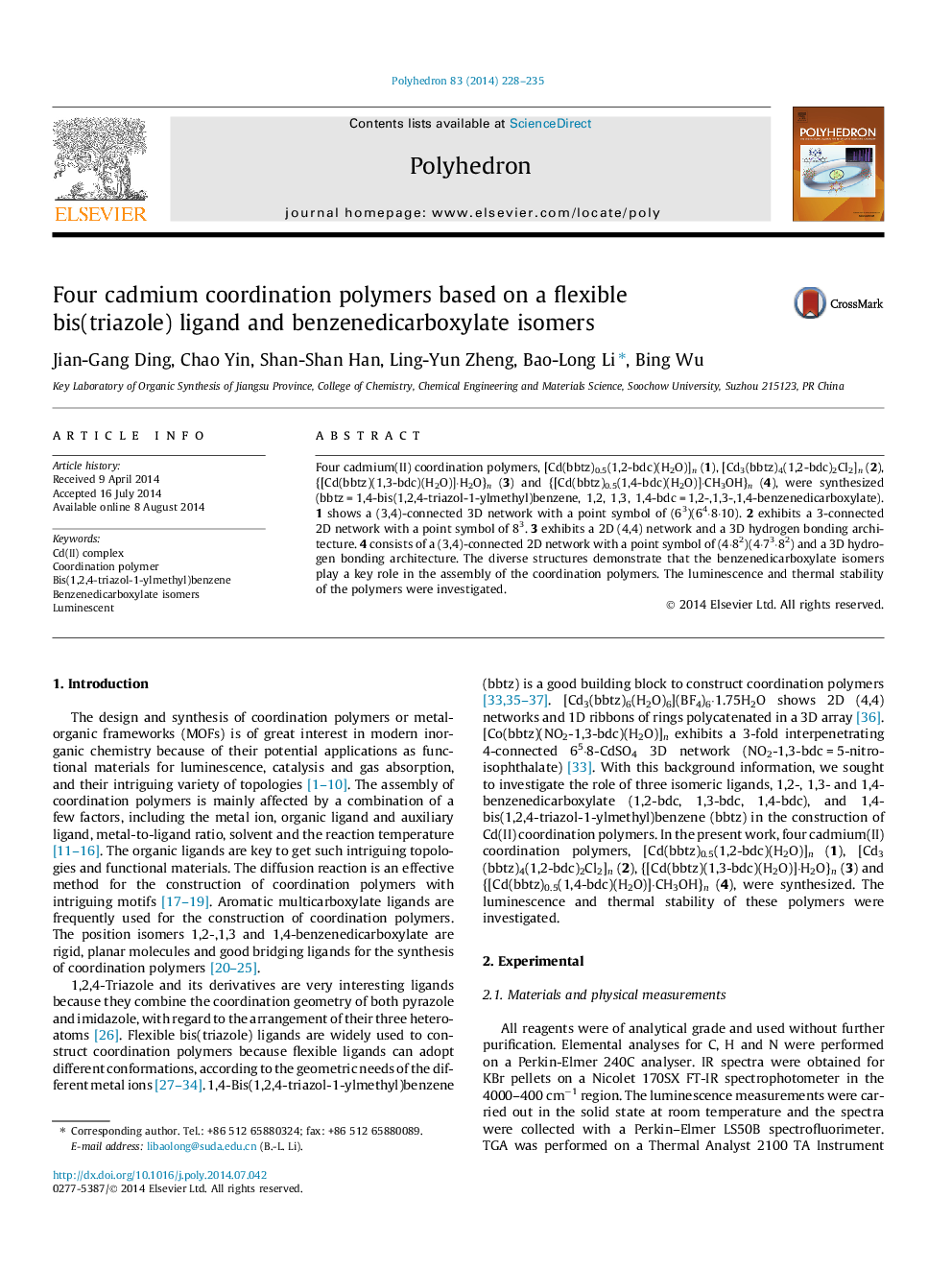| Article ID | Journal | Published Year | Pages | File Type |
|---|---|---|---|---|
| 1336420 | Polyhedron | 2014 | 8 Pages |
Four cadmium(II) coordination polymers, [Cd(bbtz)0.5(1,2-bdc)(H2O)]n (1), [Cd3(bbtz)4(1,2-bdc)2Cl2]n (2), {[Cd(bbtz)(1,3-bdc)(H2O)]·H2O}n (3) and {[Cd(bbtz)0.5(1,4-bdc)(H2O)]·CH3OH}n (4), were synthesized (bbtz = 1,4-bis(1,2,4-triazol-1-ylmethyl)benzene, 1,2, 1,3, 1,4-bdc = 1,2-,1,3-,1,4-benzenedicarboxylate). 1 shows a (3,4)-connected 3D network with a point symbol of (63)(64·8·10). 2 exhibits a 3-connected 2D network with a point symbol of 83. 3 exhibits a 2D (4,4) network and a 3D hydrogen bonding architecture. 4 consists of a (3,4)-connected 2D network with a point symbol of (4·82)(4·73·82) and a 3D hydrogen bonding architecture. The diverse structures demonstrate that the benzenedicarboxylate isomers play a key role in the assembly of the coordination polymers. The luminescence and thermal stability of the polymers were investigated.
Graphical abstractFour Cd(II) coordination polymers based on 1,4-bis(1,2,4-triazol-1-ylmethyl)benzene and benzenedicarboxylate isomers were synthesized and characterized. The diverse structures demonstrate that the benzenedicarboxylate isomers play a key role in the assembly of the coordination polymers.Figure optionsDownload full-size imageDownload as PowerPoint slide
